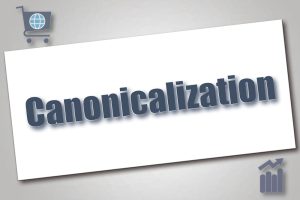In healthcare marketing, understanding the patient journey is essential to creating an effective website that not only attracts visitors but also converts them into actual patients. Justin from Webtek Interactive emphasized during his interview the importance of mapping out this journey and optimizing conversion funnels to guide potential patients smoothly from initial contact to booking an appointment.
This blog post explores how healthcare practices can use patient journey mapping and conversion funnels to improve website performance and patient engagement. By focusing on these elements, you’ll help ensure that every touchpoint on your website is designed to meet patients where they are in their decision-making process and move them forward toward conversion.
1. What Is the Patient Journey?
The patient journey refers to the stages a person goes through from becoming aware of your practice to ultimately booking an appointment and becoming a loyal patient. This journey is not linear; it can involve several steps, different touchpoints, and varying levels of engagement before a patient commits to a consultation.
Justin emphasized that understanding your audience’s behavior and needs at each stage of the journey is critical to creating a conversion-friendly website. By mapping out the patient journey, you can pinpoint where potential patients are getting stuck or dropping off and make improvements to smooth their path to booking an appointment.
The typical stages of the patient journey include:
- Awareness: This is when a person becomes aware that they need healthcare services, often through online search or referrals. At this stage, they are likely researching their symptoms or searching for a provider who can help with their specific issue.
- Consideration: During this phase, the potential patient is evaluating their options. They may be comparing different healthcare providers, reading reviews, looking at credentials, and reviewing your website content to see if you meet their needs.
- Decision: At this point, the patient is ready to make a decision. They may be on the verge of scheduling an appointment, and they need reassurance that your practice is the right choice. This is where your website’s conversion funnel plays a key role in turning a visitor into a patient.
- Action: The final stage is when the patient takes action—whether it’s filling out a contact form, scheduling an appointment, or calling your office. This is the goal of every conversion funnel.
By understanding each stage of this journey, you can better align your website’s design, content, and user experience to guide patients smoothly through the conversion funnel.
2. The Role of Conversion Funnels in Healthcare
A conversion funnel refers to the process by which website visitors are funneled through various stages, from awareness to action. In healthcare, the funnel’s goal is to encourage potential patients to book an appointment, call your office, or complete an online form.
Justin explained the importance of designing a funnel that caters to multiple patient personas and preferences. For example, some patients may prefer to call directly, while others may want to book an appointment online without speaking to anyone first. Your website should accommodate both types of patients.
A well-designed conversion funnel typically involves the following components:
- Calls to Action (CTAs): Every page on your website should include clear, prominent CTAs that guide users toward taking action. These CTAs should align with the stage of the patient journey they are in. For example, on an informational blog post, you might include a CTA that invites readers to learn more about a specific service, while on a service page, the CTA should encourage scheduling an appointment.
- Landing Pages: Landing pages are dedicated pages designed to capture leads and encourage a specific action. For example, if someone clicks on an ad for “trauma therapy in San Francisco,” they should be taken to a landing page specifically about your trauma therapy services, not just your general homepage. Justin stressed that having targeted landing pages helps ensure visitors are receiving relevant information that matches their needs, which increases the likelihood of conversion.
- Forms: Forms should be simple, user-friendly, and placed strategically on high-intent pages like service pages or contact pages. Justin recommended keeping forms short and to the point, especially for first-time visitors. You can always collect more detailed information after they’ve initiated contact.
- Sticky Menus and Persistent CTAs: One of the key pieces of advice from Justin was to include sticky menus or persistent CTAs throughout the site. This ensures that no matter where patients are on your website, they always have easy access to scheduling an appointment or contacting your office. Persistent CTAs are a subtle but powerful way to reduce friction in the patient journey and increase conversion rates.
3. Mapping the Patient Journey to Your Website Content
Different patients will be at different stages of their journey when they land on your website, so it’s important to have content that caters to all stages.
- Awareness Stage: For those in the awareness stage, content should be educational and informative. Blog posts, FAQs, and informational pages about common conditions, symptoms, and treatments can help capture these potential patients. The goal is to demonstrate your expertise and establish your practice as a trustworthy source of information.
- Consideration Stage: Once a potential patient moves to the consideration stage, they’ll be looking for more specific details about your services and expertise. Service pages, patient testimonials, case studies, and video content can help build trust. Justin emphasized the importance of making it easy for users to find this content and navigate seamlessly from one page to another.
- Decision Stage: At the decision stage, potential patients need a little extra nudge to move forward. This is where conversion optimization techniques, such as strong CTAs, reviews, trust badges, and easy booking options, come into play. You want to remove any barriers to conversion by making it as simple as possible for them to schedule a consultation or contact your office.
Tip: Make sure every page on your website is optimized for mobile devices. As Justin pointed out, a significant percentage of traffic will come from mobile users, especially those in a moment of urgency, and your conversion funnel should be just as smooth on mobile as it is on desktop.
4. Measuring Success: Analyzing the Funnel
Once you’ve optimized your website’s conversion funnel, it’s important to measure its effectiveness. Justin recommended tracking key performance indicators (KPIs) such as bounce rates, form submissions, phone call clicks, and appointment bookings to see where patients may be dropping off in the funnel.
By analyzing these metrics, you can identify weak points in the patient journey and make improvements. For example, if many visitors are reaching your contact page but not filling out the form, you may need to streamline the form or add more reassurance to encourage completion.
Tip: Use tools like Google Analytics or heatmapping software to see how users are interacting with your website. These tools can help you pinpoint specific areas where visitors may be getting stuck or abandoning the funnel.
Conclusion
Understanding the patient journey and optimizing your website’s conversion funnel are critical steps in improving the effectiveness of your healthcare marketing. By tailoring your website to meet the needs of patients at every stage of their journey, you can guide them smoothly from awareness to action.
Justin’s insights emphasized that it’s not just about attracting traffic to your site; it’s about ensuring that once visitors are there, they can easily take the next step toward becoming patients. Through thoughtful design, targeted content, and strategic conversion funnel optimization, you can enhance the patient experience and grow your practice.
Watch the full interview here:





